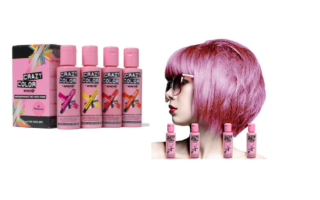We’ve all experienced the frustration of tangled and knotted hair. Whether it’s due to natural texture, long locks, or just a busy lifestyle, detangling can be a daunting task. However, with the right techniques and products, you can conquer those detangling dilemmas and achieve smooth, knot-free hair without the stress. In this article, we’ll share informative tips with a friendly tone on how to tackle your detangling dilemmas and protect your hair from unnecessary damage.
Preparing Your Hair for Detangling
Before diving into the solutions, it’s important to understand the basics of detangling. Protecting your hair and minimizing breakage starts with gentle preparation. Start by ensuring your hair is slightly damp or apply a leave-in conditioner to provide slip and make the detangling process easier. Use a wide-toothed comb or a brush with soft bristles specifically designed for detangling. Start from the ends and work your way up gradually, using gentle strokes to avoid unnecessary pulling and tugging. Now, let’s explore some effective solutions to conquer those detangling dilemmas.
Detangling Spray for Extra Slip
A detangling spray can be your best friend when it comes to combating knots and tangles. Look for a detangling spray that provides moisture and slip to make the detangling process smoother. Spray it onto your damp or dry hair, focusing on the areas with the most knots and tangles. The detangling spray will help loosen the knots and provide lubrication for easier detangling. Remember to read the instructions and use the detangling spray according to the recommended amount to avoid product buildup.
Divide and Conquer with Sections
For thick or very tangled hair, dividing your hair into sections can make the detangling process more manageable. Start by sectioning your hair into two or more parts, using hair clips or scrunchies to hold them in place. This approach allows you to focus on one section at a time, ensuring thorough detangling without causing further tangles. It also helps prevent the frustration of accidentally re-tangling hair that has already been detangled.
Finger Detangling for Gentle Care
If your hair is extremely delicate or prone to breakage, consider finger detangling as an alternative method. This technique involves using your fingers to gently separate and detangle the knots. Start by applying a detangling conditioner or oil to provide slip, and then carefully run your fingers through your hair, focusing on one small section at a time. Finger detangling allows you to have more control and feel the knots, minimizing the risk of unnecessary pulling or breakage.
Detangling from Ends to Roots
One of the most important rules of detangling is to always start from the ends and work your way up to the roots. Detangling from the ends allows you to tackle the knots gradually without causing unnecessary stress on the hair shaft. Once the ends are detangled, move a little higher and continue the process until you’ve reached the roots. This method helps prevent the knots from getting tighter and makes the detangling process more efficient.
Conditioner Comb-Out Technique
The conditioner comb-out technique is a tried-and-true method for detangling hair while minimizing breakage. After shampooing, apply a generous amount of conditioner to your hair, focusing on the areas with the most knots and tangles. Use a wide-toothed comb to gently detangle your hair, starting from the ends and working your way up. The conditioner provides slip and lubrication, making it easier to detangle without causing damage. Rinse thoroughly after detangling to ensure no residue is left behind.
Overnight Protection with Satin or Silk
Protecting your hair overnight is crucial in preventing new tangles and knots from forming. Cotton pillowcases can create friction and lead to tangles, so opt for satin or silk pillowcases instead. These smooth materials reduce friction, allowing your hair to glide effortlessly as you sleep. Additionally, tying your hair up in a loose braid or using a satin or silk bonnet can provide extra protection and keep your hair in place while you sleep.
Detangling dilemmas can be frustrating, but with the right techniques and products, you can conquer them with ease. By understanding the basics of detangling, using detangling sprays, dividing your hair into sections, considering finger detangling, detangling from ends to roots, using the conditioner comb-out technique, and protecting your hair overnight, you can achieve knot-free and smooth hair without unnecessary damage or stress. Remember, patience and gentle care are the keys to successful detangling.




